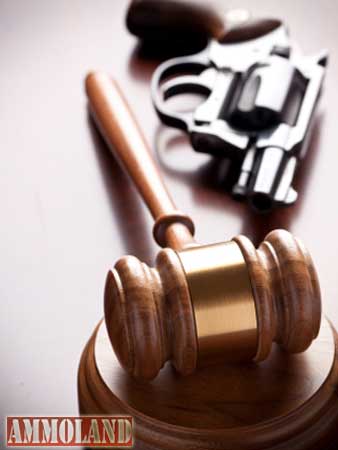

Fairfax, VA –-(Ammoland.com)- In a groundbreaking opinion examining the Gun Control Act’s categorical prohibition on firearm possession for persons who have been “committed to a mental institution,” the United States Court of Appeals for the Sixth Circuit determined the Second Amendment prohibited application of the ban to an individual who had been committed 28 years earlier and had no viable option for seeking restoration of his rights.
The case is Tyler v. Hillsdale Co. Sheriff’s Dept.
Clifford Tyler is a 73-year-old man who does not currently suffer from mental illness and has no history of violence, unlawful behavior, or substance abuse. In 1985, when Tyler was 45 years old, his then-wife of 23 years left him for another man, depleted his finances, and filed for divorce. Tyler became distraught and suicidal, and he was involuntarily committed by a Michigan probate court, after his daughters called police for fear of his safety. Less than a month later, Tyler was released from the facility and returned to the workforce for nearly two decades.
A psychologist who evaluated Tyler in 2012 determined the 1985 commitment “appeared to be a brief reactive depressive episode in response to his wife divorcing him.”
Unlike other federal appellate courts, the Sixth Circuit evaluated Tyler’s claim under strict scrutiny. This is the highest level of scrutiny in constitutional law that deals with situations in which the court examines whether the government’s regulation relates to a sufficiently important governmental interest and is sufficiently “tailored” to achieving that interest. To satisfy strict scrutiny, the government’s interest must be “compelling,” and the regulation must be “narrowly” tailored to achieving it.
Before turning to the “means-end” analysis, the court first concluded that the ban on individuals committed to a mental institution did not have a long pedigree in American law. It noted in this regard that mental institutions were virtually unheard of in America at the time the Second Amendment was adopted.
With regard to the strict scrutiny analysis, the government asserted the interests protected by the prohibition were “protecting the community from crime” and “preventing suicide,” which the court readily recognized as compelling. Thus, the case turned on whether the regulation was narrowly tailored to that end.
The court found that as applied to Taylor, it was not. First, unlike other categorical prohibitions on firearm possession in the Gun Control Act, the commitment prohibition could apply to non-violent, non-criminal individuals, who were prohibited based on conduct that was not under their control.
The court also reasoned that Congress itself did not intend for all previously committed people to lose their Second Amendment rights for life, because it created two roads to relief.
One is a petition process administered under federal law, and another is federal recognition of certain state relief from disability procedures. In Tyler’s case, however, neither option was available. Congress has defunded the federal relief procedure since 1992, and Michigan has not enacted a state relief procedure that complies with federal law.
Thus, as applied to Tyler, the prohibition for previously committed individuals was “overbroad” and therefore not narrowly tailored. “The government’s interest in keeping firearms out of the hands of the mentally ill is not sufficiently related to depriving the mentally healthy, who had a distant episode of commitment, of their constitutional rights.”
The court’s opinion demonstrates the outcome of a scholarly, inquisitive analysis of the issue before it. Unfortunately, few other federal appellate courts have demonstrated a similar “commitment” to a thorough review of Second Amendment issues, and have treated the issue with condescension and superficiality, if not outright hostility.
Indeed, the court itself stated “we do not believe that any other court of appeals in a reasoned opinion has reviewed a firearm restriction as severe as this one”.
The Sixth Circuit covers portions of Kentucky, Michigan, Ohio, and Tennessee.
About:
Established in 1975, the Institute for Legislative Action (ILA) is the “lobbying” arm of the National Rifle Association of America. ILA is responsible for preserving the right of all law-abiding individuals in the legislative, political, and legal arenas, to purchase, possess and use firearms for legitimate purposes as guaranteed by the Second Amendment to the U.S. Constitution. Visit: www.nra.org

The gavel is whats bass ackwards !
@chuckfab,its called ‘due process’ ! Them liberal parasites wont take nobodys weapons from them in Texas ! Noway,Nohow !
One more time ! ,,,the cylinder release in that revolver is correct ! This aint no trick photo or nothing like that.
The cylinder release IS on the wrong side in the photo.
Mentally ill is a very loose term. If we want to get down to the facts anyone who gets angry or has negative thoughts is mentally ill. That means everyone including cops and soldiers. So these high and mighty judges who take guns away from people need to include themselves and everyone else in the world including cops and soldiers. Many soldiers coming back from service have had guns taken from them because they have PTSD. Until these guys break a law, are charged and convicted, this is unlawful. Basically the courts are saying they can read these people’s minds… Read more »
The release on the revolver is correct ! …although I dont know what that has to do with the article. Im sure glad everything worked out for this ole boy !
Unless S&W makes a left-handed revolver, try to avoid reverse-negative photos. The revolver in the photo has a cylinder release latch on the right side (unless it’s a reflection).
That is not a S&W, It is a Charter arms, So if you want to nitpick, Make sure you are correct in all observations.